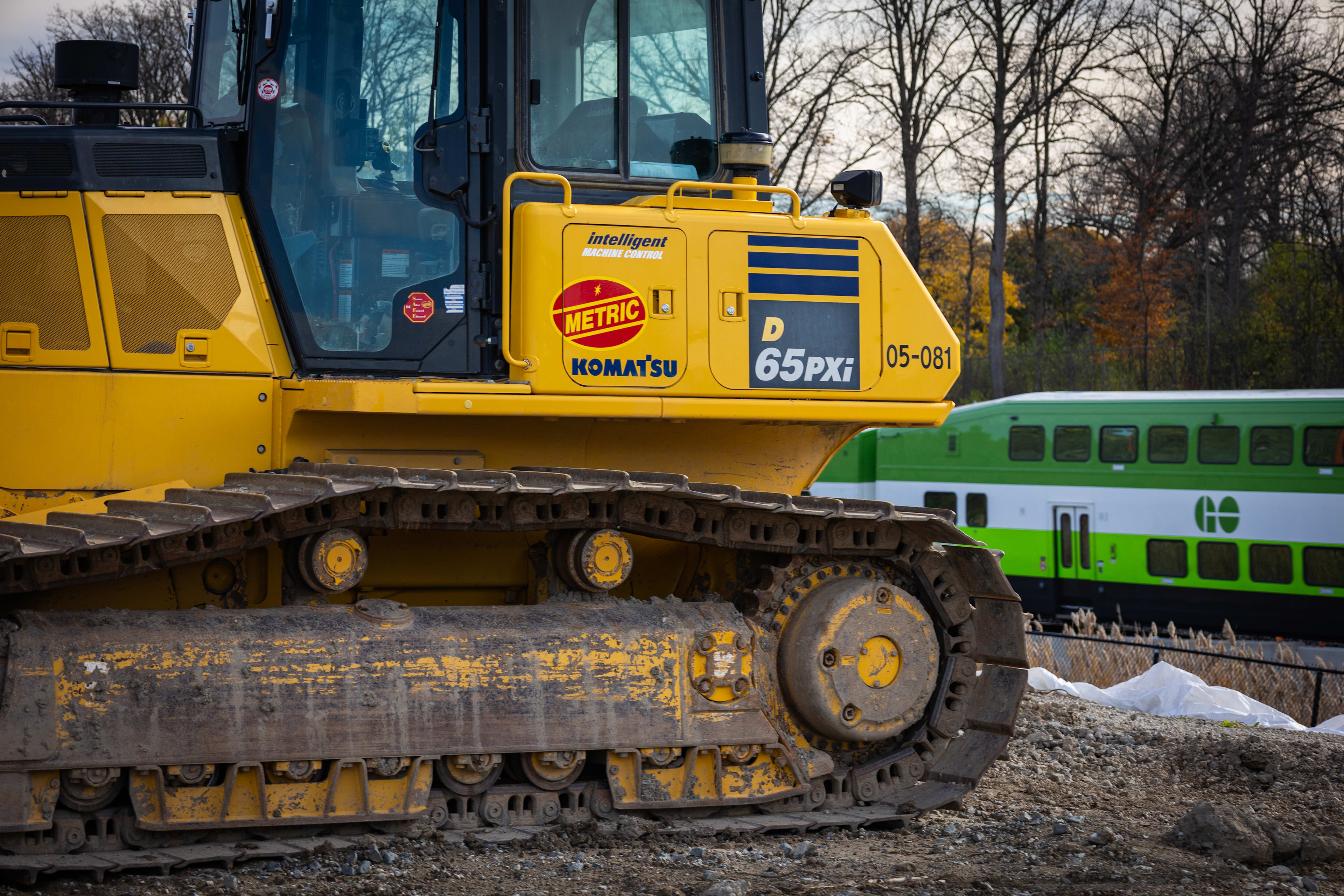Share
How logistics hubs are enabling GO Expansion
A connected network of work sites will streamline construction to enhance GO network efficiency
Dec 23, 2024
The GO Expansion program is making progress and transforming our rapidly growing region in ways greater than previously imagined. Once complete, it will bring two-way, all-day service, every 15 minutes on our busiest corridors, among many other benefits.
To support the complex construction coordination required for these projects, crews are setting up logistics hubs across selected areas to form the logistics yards network – an important system to deliver this program. These sites will be set up along the GO rail network to store, assemble, and distribute materials and equipment needed for the GO Expansion construction projects.
What are logistics hubs?
Logistics hubs are specialized staging and laydown areas designed to support large-scale infrastructure projects like GO Expansion. Strategically located on Metrolinx-owned or licensed land, these sites will have direct access to the GO rail network, allowing for efficient material and equipment distribution across construction sites.
An example of construction machinery that will help build future GO service. (Metrolinx photo)
Why are logistics hubs necessary?
Logistics hubs will help streamline construction activities along parts of the GO rail network – including for civil works, track installation, signaling and electrification – by being the central locations for the assembly and production of equipment and other infrastructure assets. They will also help maintain a steady flow of resources and minimize delays.
What are the benefits of a multi-hub approach?
In addition to the benefits above, there are several advantages to the multi-hub approach of the logistics yards network:
- Simultaneous activities: Multiple hubs allow for construction activities to occur at the same time.
- Redundancy and reliability: If one hub is unavailable, another can support the work, minimizing schedule impacts.
- Reduced road congestion: Using rail for resource distribution reduces the number of construction vehicles on the roads, keeping them clearer for motorists, cyclists and pedestrians.
- Environmental benefits: Using rail for transportation reduces the project's carbon footprint and includes measures to manage noise, vibration and air quality.
Early work has kicked off at the three logistics hub's locations. Here is what to expect during different phases of construction at these sites:
- Site preparation: Activities include debris cleanup, vegetation removal, fencing, utility works, land clearing and leveling, ensuring a clean and safe area for the next stage of work.
- Construction: This includes laying new tracks, building essential facilities and installing power systems.
- Operational activities: This is when logistics hubs transition to their full operational role, carrying out electrification, soil management, track assembly, material handling and more.
Soon, construction activities will be underway which will include parking and restocking work trains, storing materials, building track sections and moving train cars between tracks for storage or use.
Crews are setting up logistics hubs to store, assemble, and distribute materials and equipment needed for GO Expansion construction projects. (Metrolinx photo)
Faster, more reliable transit
By 2041, an estimated 5.4 million people will live within 5 km of a GO station across more than 20 municipalities. These hubs will be critical for the construction of GO Expansion projects across the region, resulting in more frequent, faster and reliable train services. Once complete, these projects will allow for shorter travel times, improved on-time performance and a smoother commute for GO riders.
Click here to learn more about GO Expansion and projects near you.
by Nazia Khan Senior advisor, capital communications
